Filter by

A Dictionary of Music and Musicians (A.D. 1450–1880)
This is a reissue of the first edition of George Grove's Dictionary of Music and Musicians, which has since evolved to become the largest and most authoritative work of its kind in English. The project grew in the making: the title page of Volume 1 (1879) refers to 'two volumes', but by the time Volume 4 appeared in 1889 there was also a 300-page appendix and a separate index volume. The dictio…
- Edition
- -
- ISBN/ISSN
- 9780511703324
- Collation
- -
- Series Title
- Cambridge Library Collection - Music
- Call Number
- -
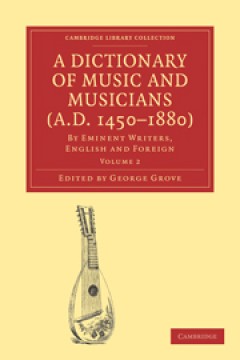
A Dictionary of Music and Musicians (A.D. 1450–1880)
This is a reissue of the first edition of George Grove's Dictionary of Music and Musicians, which has since evolved to become the largest and most authoritative work of its kind in English. The project grew in the making: the title page of Volume 1 (1879) refers to 'two volumes', but by the time Volume 4 appeared in 1889 there was also a 300-page appendix and a separate index volume. The dictio…
- Edition
- -
- ISBN/ISSN
- 9780511703317
- Collation
- -
- Series Title
- Cambridge Library Collection - Music
- Call Number
- -
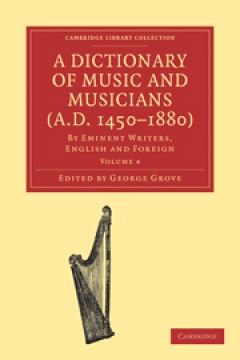
A Dictionary of Music and Musicians (A.D. 1450–1880)
This is a reissue of the first edition of George Grove's Dictionary of Music and Musicians, which has since evolved to become the largest and most authoritative work of its kind in English. The project grew in the making: the title page of Volume 1 (1879) refers to 'two volumes', but by the time Volume 4 appeared in 1889 there was also a 300-page appendix and a separate index volume. The dictio…
- Edition
- -
- ISBN/ISSN
- 9780511703331
- Collation
- -
- Series Title
- Cambridge Library Collection - Music
- Call Number
- -
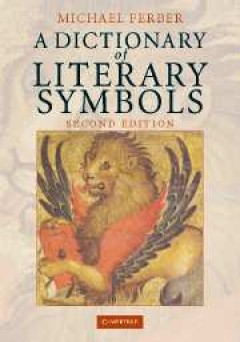
A Dictionary of Literary Symbols
This is the first dictionary of symbols to be based on literature, rather than 'universal' psychological archetypes or myths. It explains and illustrates the literary symbols that we all frequently encounter (such as swan, rose, moon, gold), and gives hundreds of cross-references and quotations. The dictionary concentrates on English literature, but its entries range widely from the Bible and c…
- Edition
- -
- ISBN/ISSN
- 9780511481475
- Collation
- -
- Series Title
- -
- Call Number
- -
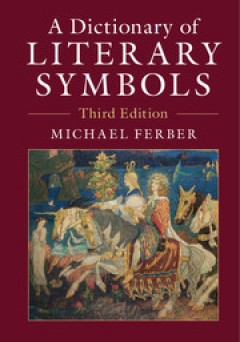
A Dictionary of Literary Symbols
This is an expansion of the first dictionary of symbols to be based on literature, rather than on 'universal' psychological archetypes or myths. It explains and illustrates the literary symbols that we frequently encounter (such as swan, rose, moon, gold) and gives thousands of cross-references and quotations. The dictionary concentrates on English literature, but its entries range widely from …
- Edition
- -
- ISBN/ISSN
- 9781316771426
- Collation
- -
- Series Title
- -
- Call Number
- -
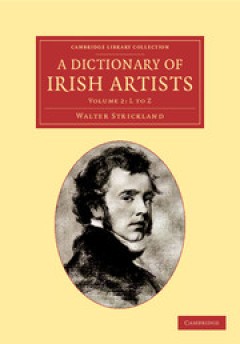
A Dictionary of Irish Artists
First published in 1913, this highly illustrated two-volume work was intended to give as full an account as possible of the lives and works of painters, sculptors and engravers in Ireland from the earliest times to the nineteenth century. Until then, the history of Irish art had been largely neglected, so this project was an extensive undertaking for Walter George Strickland (1850–1928), who …
- Edition
- -
- ISBN/ISSN
- 9781139382113
- Collation
- -
- Series Title
- Cambridge Library Collection - Art and Architecture
- Call Number
- -
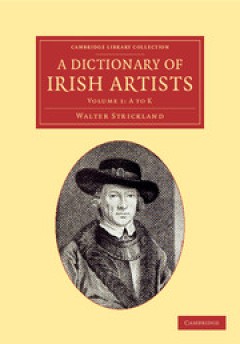
A Dictionary of Irish Artists
First published in 1913, this highly illustrated two-volume work was intended to give as full an account as possible of the lives and works of painters, sculptors and engravers in Ireland from the earliest times to the nineteenth century. Until then, the history of Irish art had been largely neglected, so this project was an extensive undertaking for Walter George Strickland (1850–1928), who …
- Edition
- -
- ISBN/ISSN
- 9781139382106
- Collation
- -
- Series Title
- Cambridge Library Collection - Art and Architecture
- Call Number
- -
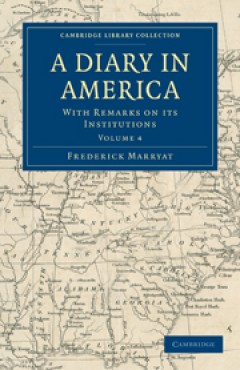
A Diary in America With Remarks on its Institutions
Captain Frederick Marryat (1792–1848) was a distinguished naval officer, today best remembered as a novelist (particularly of stories for children), often drawing on his own experiences. He also edited a radical journal, and wrote non-fiction, including an attack on press-gangs, which damaged his career. He spent 1837 and 1838 travelling in North America, publishing his impressions in this un…
- Edition
- -
- ISBN/ISSN
- 9781139058704
- Collation
- -
- Series Title
- Cambridge Library Collection - North American History
- Call Number
- -
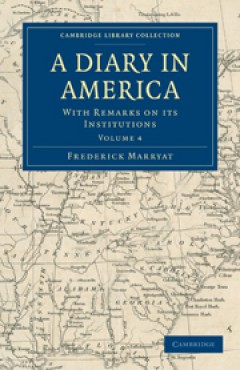
A Diary in America With Remarks on its Institutions
Captain Frederick Marryat (1792–1848) was a distinguished naval officer, today best remembered as a novelist (particularly of stories for children), often drawing on his own experiences. He also edited a radical journal, and wrote non-fiction, including an attack on press-gangs, which damaged his career. He spent 1837 and 1838 travelling in North America, publishing his impressions in this un…
- Edition
- -
- ISBN/ISSN
- 9781139058711
- Collation
- -
- Series Title
- Cambridge Library Collection - North American History
- Call Number
- -

A Diary in America With Remarks on its Institutions
Captain Frederick Marryat (1792–1848) was a distinguished naval officer, today best remembered as a novelist (particularly of stories for children), often drawing on his own experiences. He also edited a radical journal, and wrote non-fiction, including an attack on press-gangs, which damaged his career. He spent 1837 and 1838 travelling in North America, publishing his impressions in this un…
- Edition
- -
- ISBN/ISSN
- 9781139058728
- Collation
- -
- Series Title
- Cambridge Library Collection - North American History
- Call Number
- -
 Computer Science, Information & General Works
Computer Science, Information & General Works  Philosophy & Psychology
Philosophy & Psychology  Religion
Religion  Social Sciences
Social Sciences  Language
Language  Pure Science
Pure Science  Applied Sciences
Applied Sciences  Art & Recreation
Art & Recreation  Literature
Literature  History & Geography
History & Geography